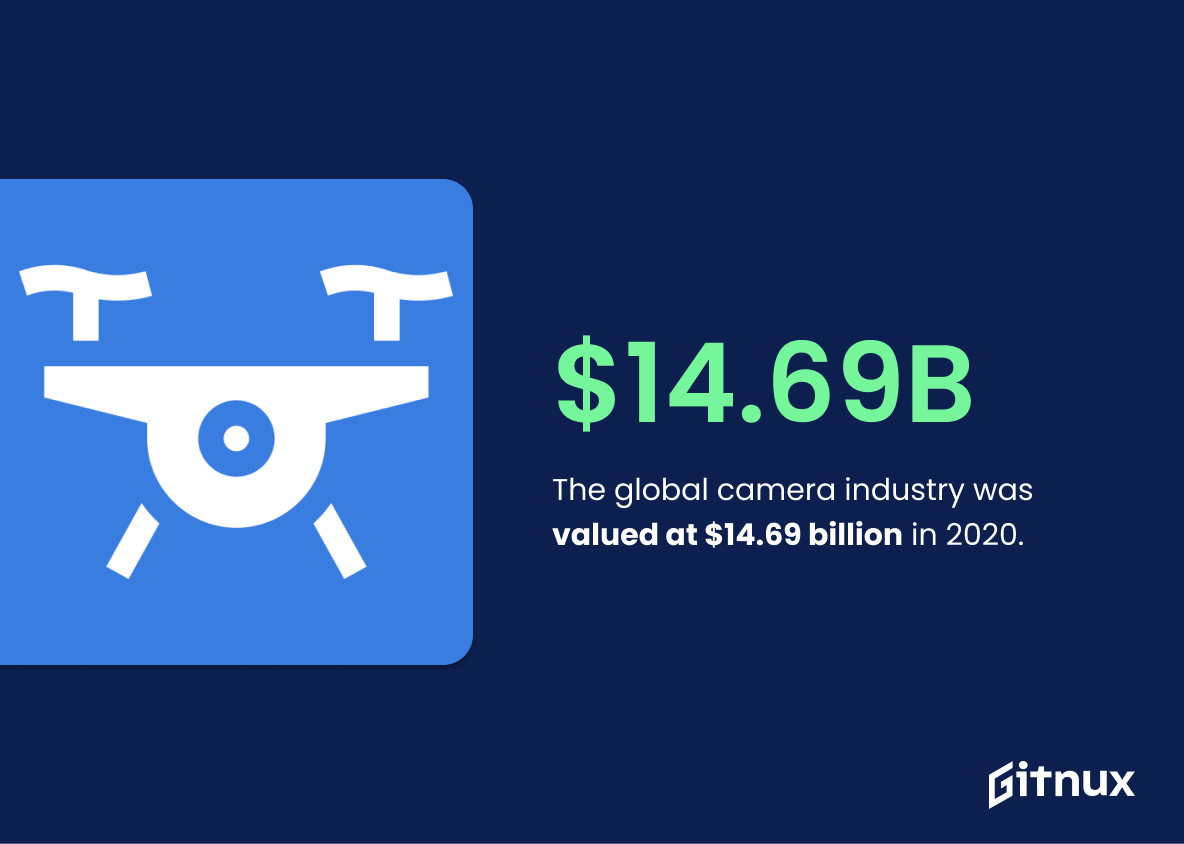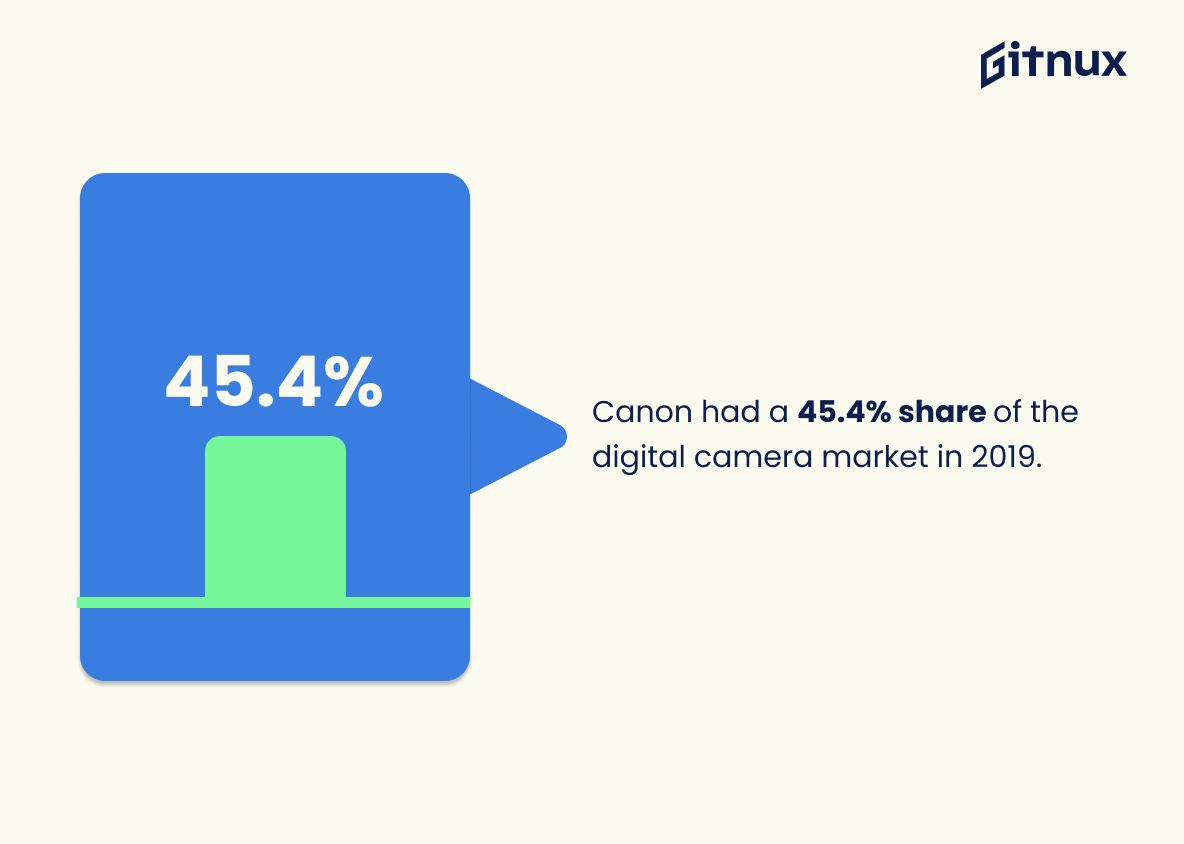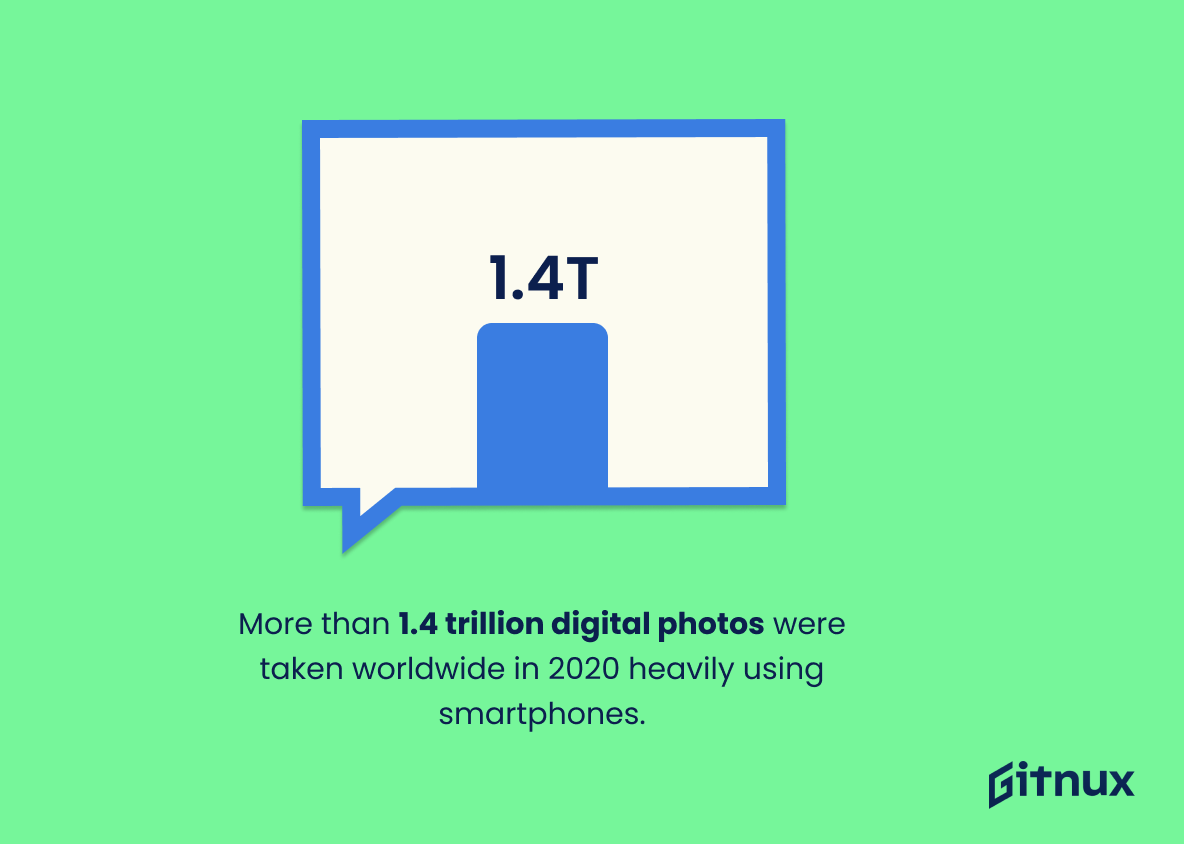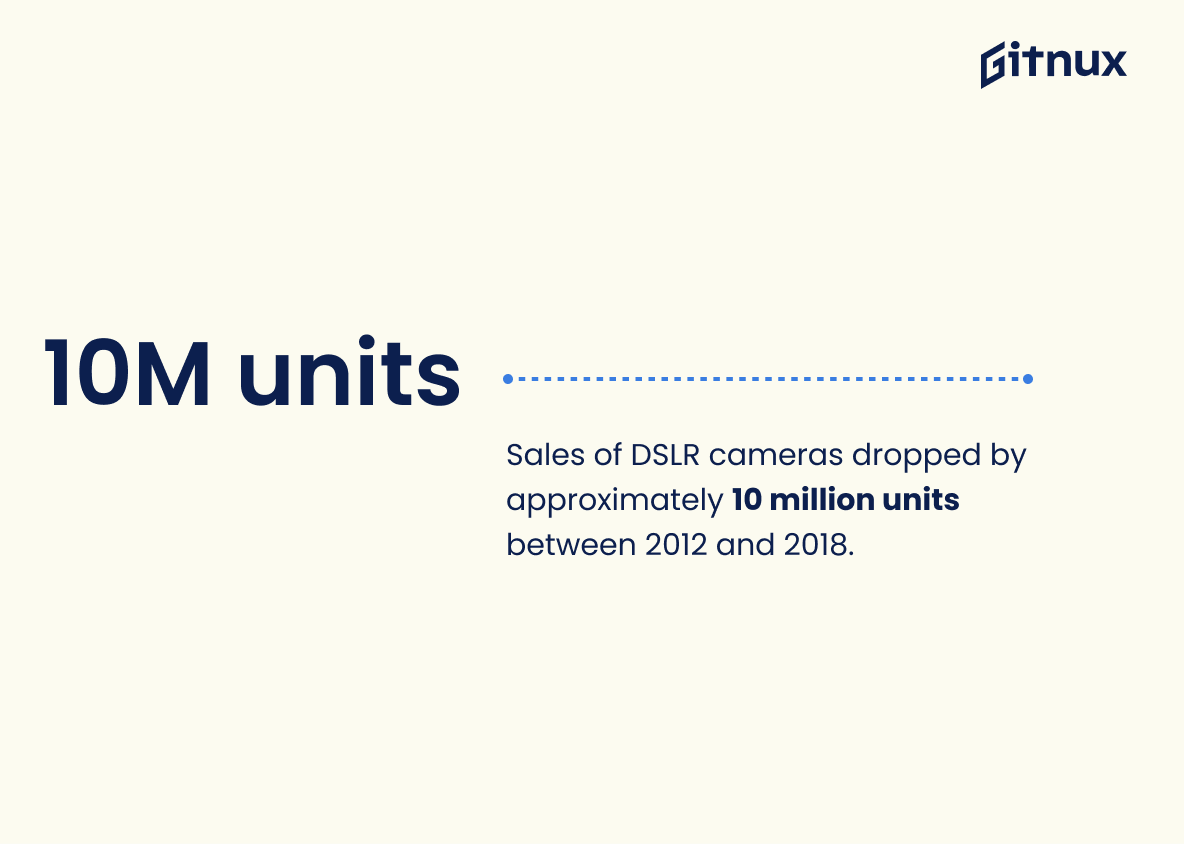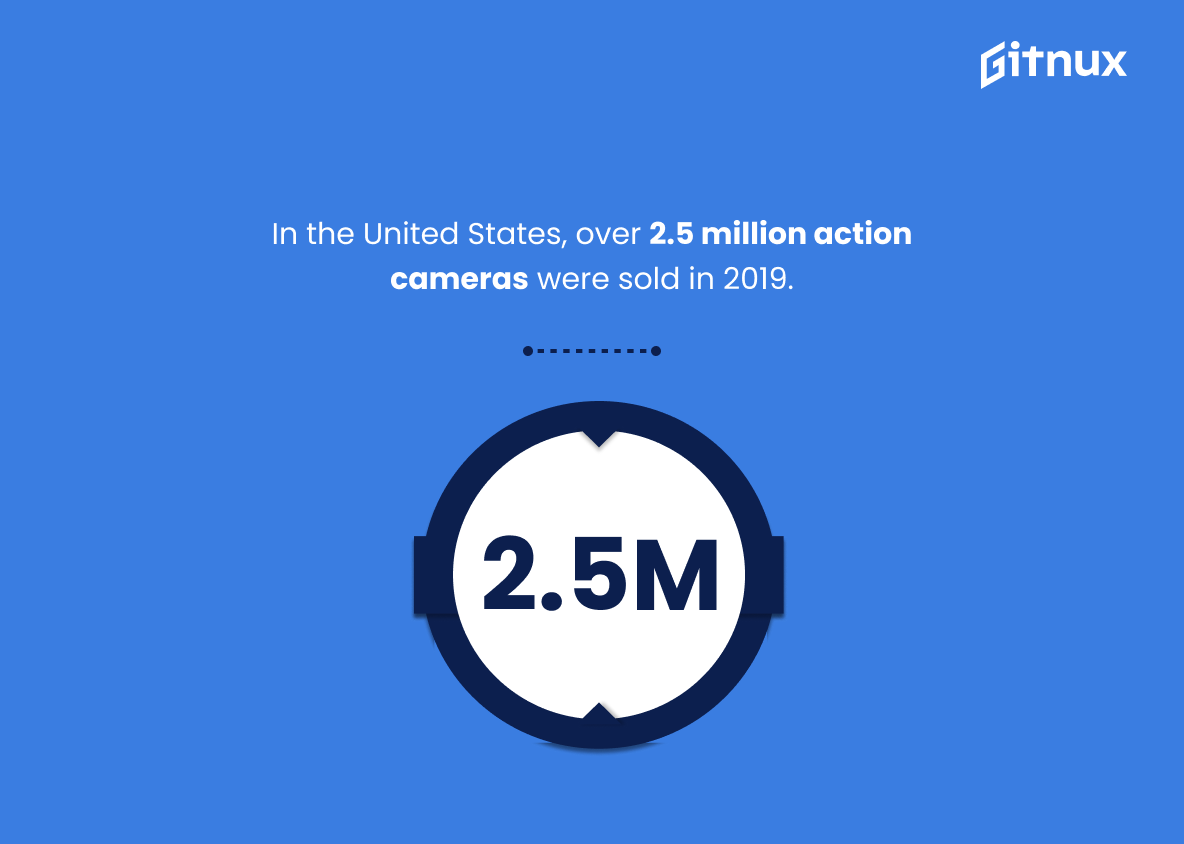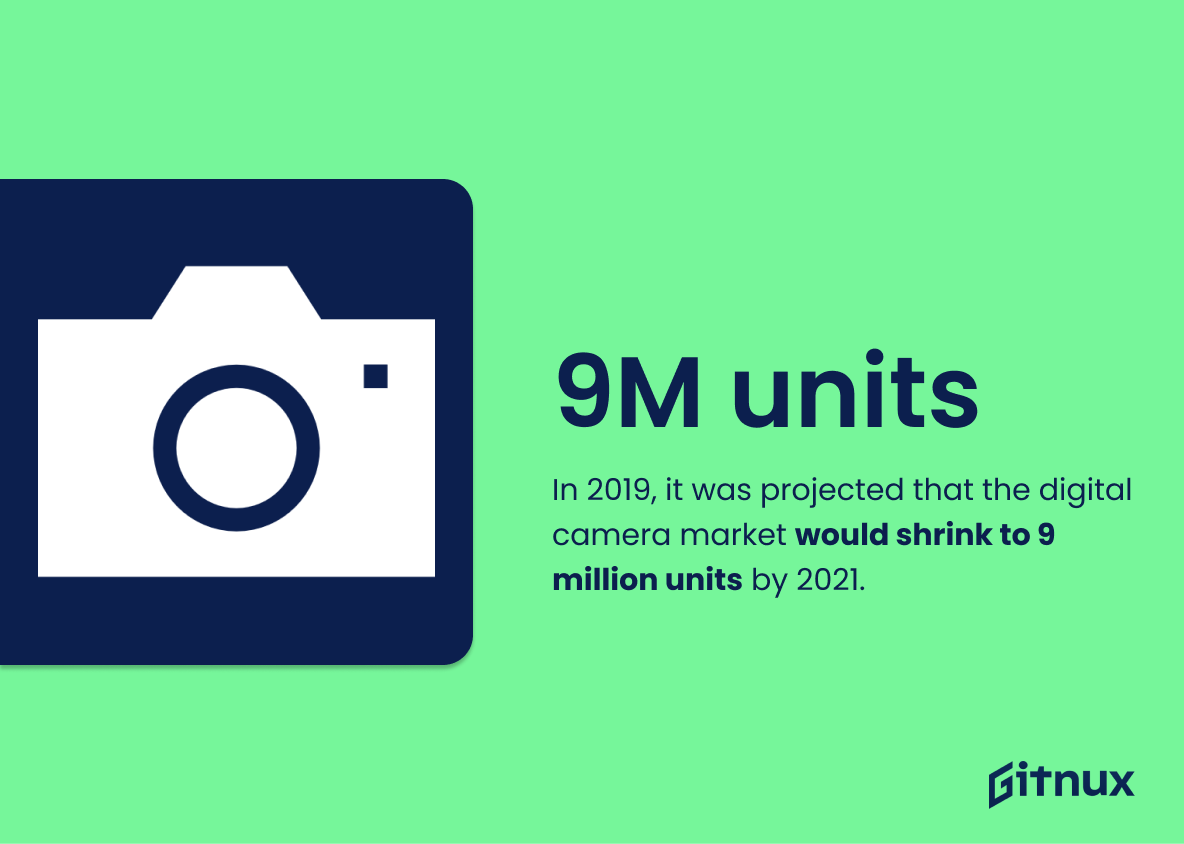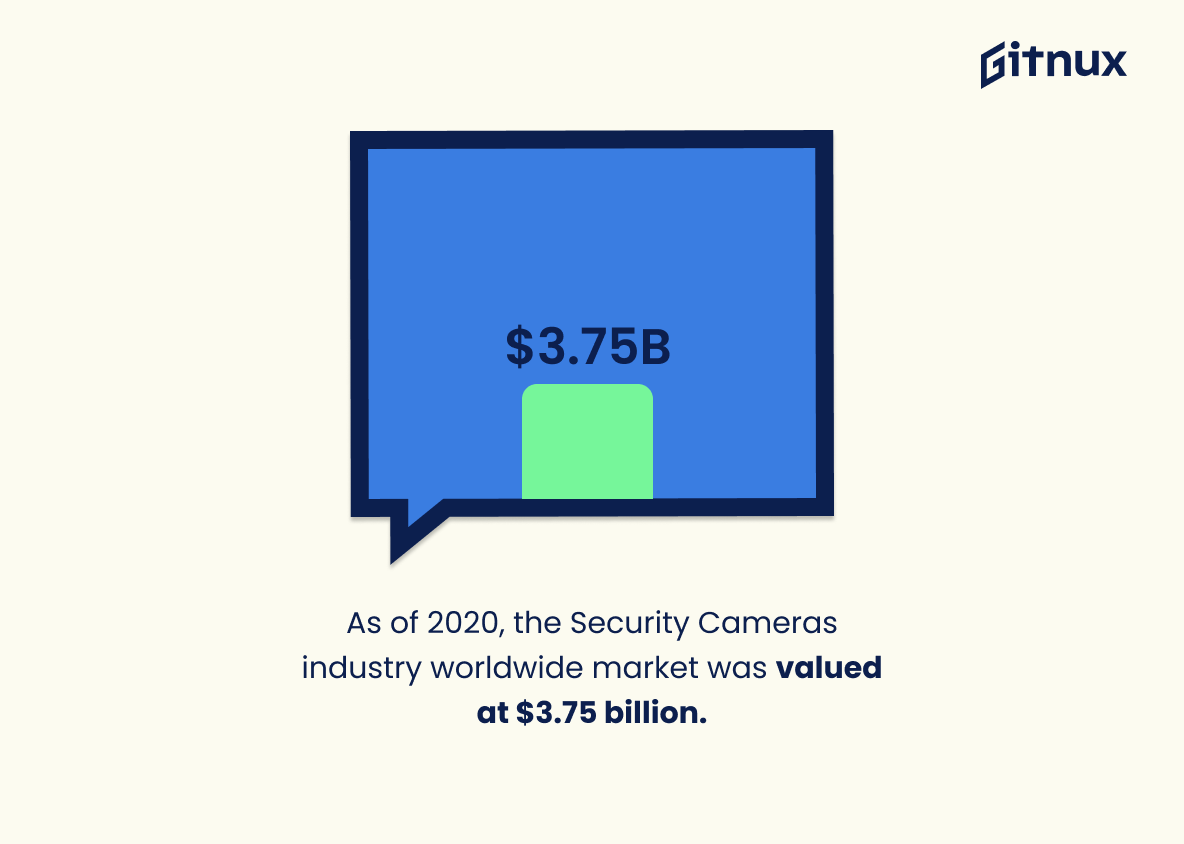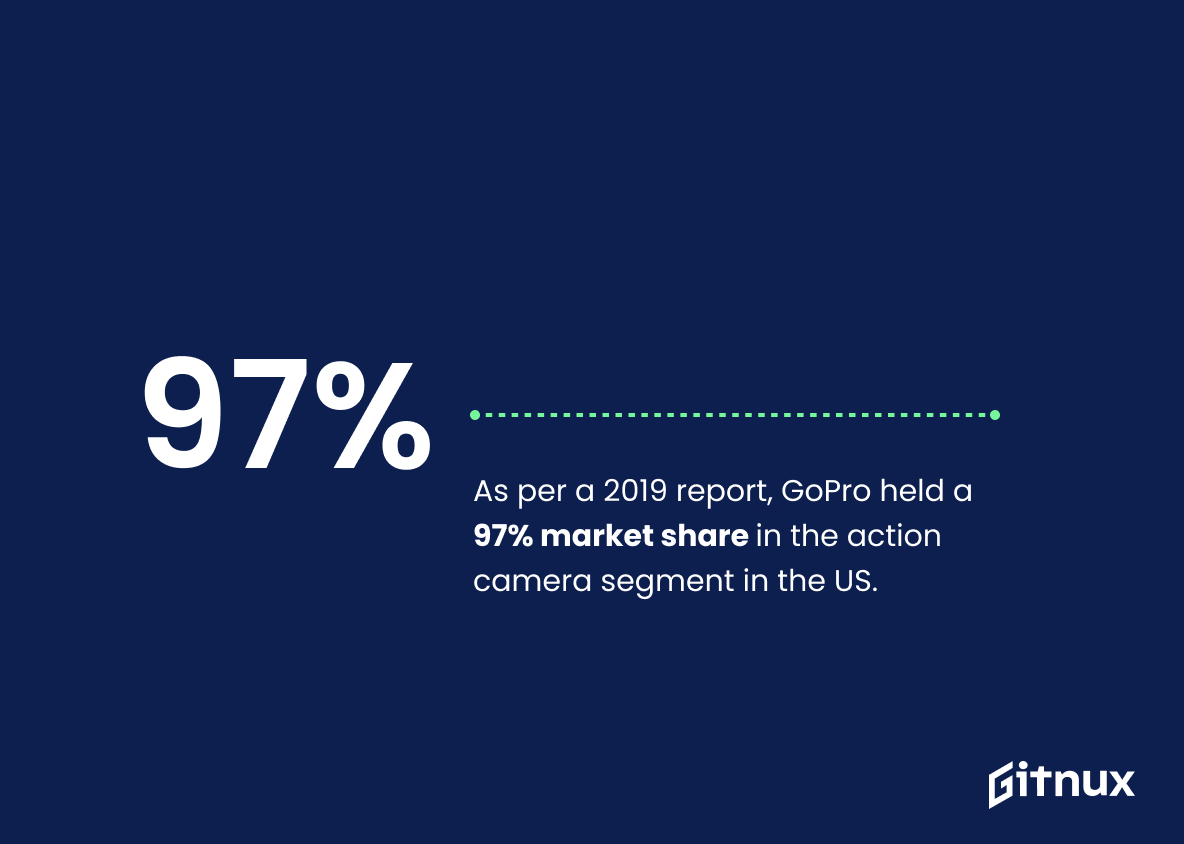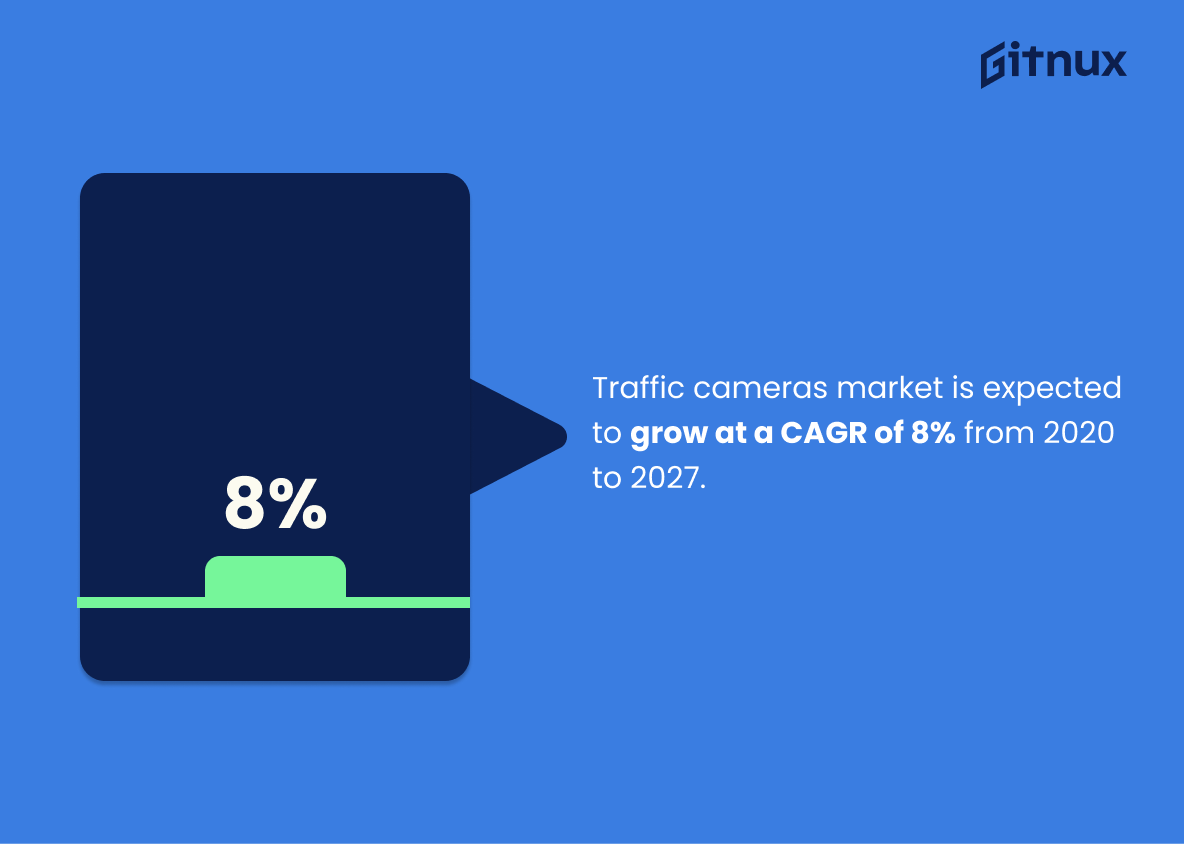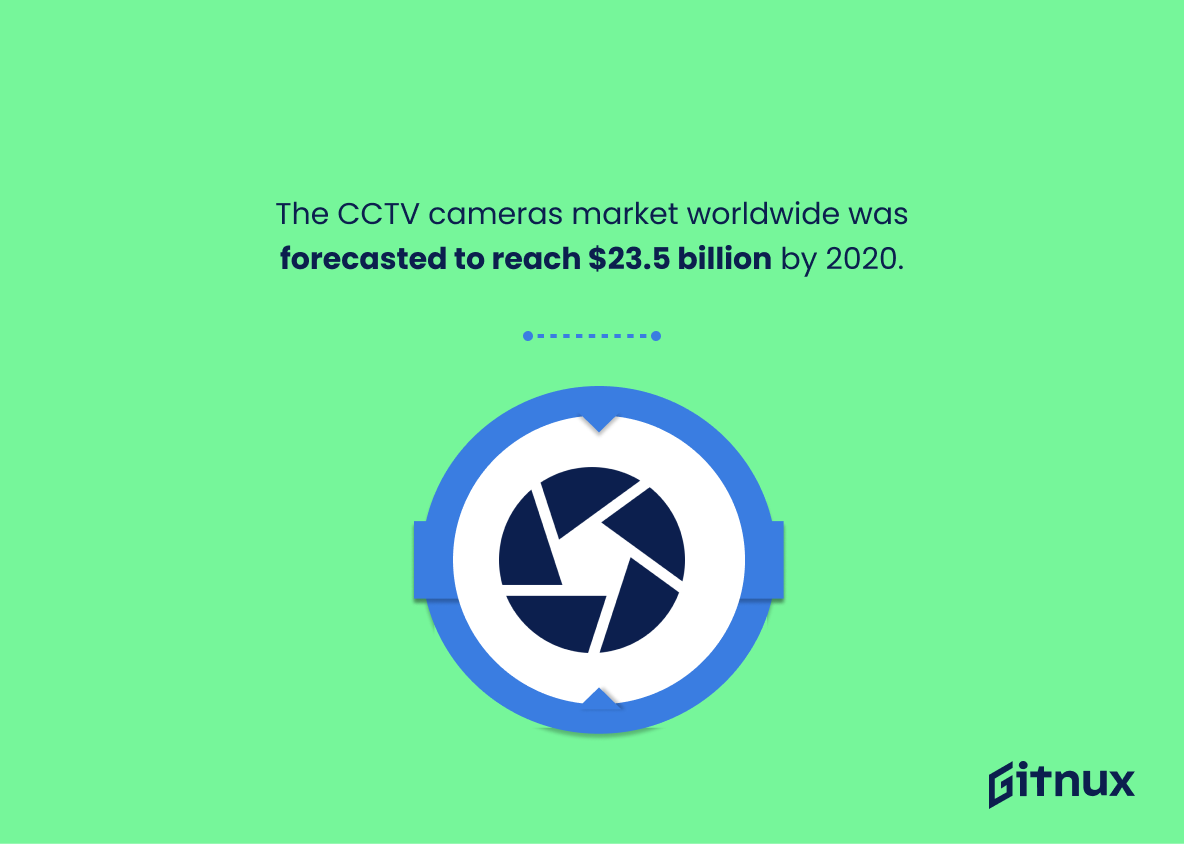In the visually-centric world we live in, the camera industry plays a pivotal role. Capturing life’s moments, delivering high-quality images for businesses, and enabling creative artistic expression, cameras have transformed our interaction with the world. Understanding the shifting sands of the camera industry can help photographers and businesses alike adapt and thrive. In this blog post, we delve into the fascinating world of camera industry statistics. We will explore trends, market share, changes fostered by technological advancements, consumer behaviors and an insightful forecast of what lies ahead. With the interplay of data and analysis, you’ll gain an in-depth understanding of an industry that shapes how we document, share and perceive our world.
The Latest Camera Industry Statistics Unveiled
The global camera industry was valued at $14.69 billion in 2020.
Unveiling the value of the global camera industry as an impressive $14.69 billion in 2020 adds a weighty stroke of authority and importance to the conversation on camera industry statistics. It stages a vivid picture of the incredible economic impact this sector has worldwide and provides a metric of comparison for future growth or downturns. Truly, such a hefty figure underscores the sheer magnitude of the industry, gravely influencing trading dynamics, technological advancements, and competitive strategies taking place on the global stage in the era of imagery and content creation.
The Camera & Film Wholesaling industry in the US has decreased by -1.7% in 2021.
In the ocean of Camera Industry Statistics, some tides rise and some fall. One notable downturn is the 1.7% fall in the Camera & Film Wholesaling industry in the US during 2021. This dip sparks intrigue as it subtly hints at shifting winds in the market landscape. It may suggest people are veering away from traditional photography methods, there’s increased competition from online retailers or a surge in digital platforms reducing the need for physical gears. As such, for stakeholders, market players, or just casual observers, this serves as a guiding lighthouse, signaling where the industry might be headed and what rough waters may lie ahead or maybe it’s just a storm in a teacup.
Asia accounted for approximately 66% of the global digital camera production in 2015.
The lens through which the camera industry can be scrutinized opens up to a captivating panorama with the statistic that in 2015, nearly two thirds of global digital camera production was credited to Asia. It underscores Asia’s role as the linchpin, highlighting the continent’s supremacy in the landscape of this industry. Chasing this thread further can unveil the amalgamation of factors – technology, labor, infrastructure – contributing to this production might. Moreover, it provides food for thoughts on how diverse market trends, consumer preferences, and economic strategies unfold across different parts of the world. So, as we soak in these figures, the intricate snapshot of the industry becomes clearer, influencing decisions of market entries, adaptation strategies, and forecasting future trends.
Canon had a 45.4% share of the digital camera market in 2019.
Delving deeply into the realm of the Camera Industry Statistics, our attention is riveted by an intriguing piece of datum spotlighting Canon, which comfortably held the reins of the digital camera market with an impressive 45.4% share in 2019. Stating this statistic adds a vibrant stroke of understanding illuminating Canon’s dominance in the industry. It helps us comprehend the consumer preference and the immense trust the brand has established over the years. Moreover, it offers keen insights into the competitive landscape, allowing us to trace the market trends and predict potential shifts. The use of such significant statistics strengthens the credibility of the blog post by grounding the narrative in solid evidential support. Such quantitative evidence bolsters the exploration of industry patterns, consumer choices, and potential business strategies manifesting in the photographic world.
Approximately 80% of cameras sold in Japan in 2018 were mirrorless.
Highlighting the surge in mirrorless camera sales in Japan in 2018 adds a dynamic dimension to our insights on the camera industry. The impressive 80% sales figure presents an intriguing benchmark indicating the shifting consumer preference. It suggests a potent technological transition within the industry, with consumers recognizing and appreciating the compactness and overall technical superiority of mirrorless cameras. Leveraging this intriguing piece of statistics, we can critically analyze the global trends, regional disparities, technological advancements, and market players’ strategic decisions. This statistic adds a vivid color to the camera industry’s broader canvas while providing a nuanced understanding of the evolving consumer behaviors and market trends.
Global smartphone shipments surpassed 1.5 billion units in 2019, impacting negatively on the digital camera industry.
Within the camera industry narrative, the data point that global smartphone shipments surpassed 1.5 billion units in 2019 serves as a pivotal subplot. Morphing smartphones into a force to be reckoned with, it would be a folly to ignore their impact on traditional digital camera’s sales. This explosion in smartphone usage signifies an ascension of high-quality camera phones that are compact, convenient, and multifunctional, thus posing a formidable challenge to the conventional camera market.
More than 1.4 trillion digital photos were taken worldwide in 2020 heavily using smartphones.
Unveiling a vibrant snapshot of the evolving sphere of photography, the staggering figure of 1.4 trillion digital photos captured globally in 2020 meticulously stitches a compelling narrative. Significantly, the dominant use of smartphones in this expansive tide of digital imagery heralds a transformative shift in the camera industry. In contrast to traditional DSLRs and point-and-shoot cameras, the convenience, accessibility, and advancing technology of smartphone cameras are seemingly crafting a new norm.
This colossal digit not only echoes the ubiquitous presence of smartphones in our lives but also reveals their potent role as primary photographic tools. Amidst our pulsating, instant-gratification favoring era, such a paradigm shift forces camera manufacturers to reevaluate their strategies, innovate, and adapt to keep pace with this smartphones-led photo revolution.
In the backdrop of these findings, it becomes clear as day that the future of camera industry pivots substantially on its responsiveness to the smartphone era – blending the aesthetic power of conventional cameras with the convenience of smartphones, thus enabling meaningful, creative expressions accessible at fingertips.
Sales of DSLR cameras dropped by approximately 10 million units between 2012 and 2018.
Peering through the lens of industry trends, the stated statistic offers a dramatic snapshot of the camera industry’s shifting dynamics. A steep drop of approximately 10 million units in DSLR camera sales from 2012 to 2018 underscores a pivotal evolution within the sector. It signals how consumer preferences and technological advancements are transforming traditional market norms. Readers exploring camera industry statistics will find it both intriguing and insightful, illuminating the abrupt decline of once-dominant DSLR cameras – thus providing a wider angle on the industry’s competitive landscape.
As of August 2021, the action camera market size was estimated to be $4.9 billion.
In a blog post dissecting Camera Industry Statistics, an intriguing piece of the puzzle is the substantial $4.9 billion estimated value of the action camera market as of August 2021. This figure becomes a crucial indicator, shining a light on a distinct segment of the camera industry that is experiencing significant growth. It embellishes the narrative by highlighting the robust health of the niche action camera segment, infusing confidence among investors and stakeholders while generating interest among potential market entrants. Therefore, by folding in this statistic, the blog post will include a comprehensive view of the industry, recognizing every contributing factor, no matter how small or specialized its corner of the market may be.
In the United States, over 2.5 million action cameras were sold in 2019.
“Taking a snapshot of the camera industry, the sale of over 2.5 million action cameras in the United States in 2019 develops a clear image of market trends. This hefty sales volume underlines the growing popularity and demand for action cameras, illustrating a dynamic change in consumer preferences. It offers a lens through which we can view the shifting landscapes of the camera industry, with consumers aligning their focus towards more versatile, compact, and adventure-ready camera options. It’s like the industry has shuttered the traditional camera stereotype, capturing a new frame that details the adventurous spirit of the modern consumer in high resolution.”
In 2019, it was projected that the digital camera market would shrink to 9 million units by 2021.
Delving into the realm of the camera industry statistics, one cannot simply sidestep the pulsing heartbeat of the 2019 prediction that the digital camera market may, in fact, contract to merely 9 million units by 2021. In the dynamic and fast-paced arena of technology, this vaticination strikes a resonating note.
Not only does this statistic serve as an empirical spotlight onto the evident contraction in consumer preference for standalone digital cameras, it also informs industry stakeholders about potential challenges and opportunities. For traditional camera manufacturers, it underscores the urgency of reinventing business strategies and injecting innovation into product offerings.
Conversely, this contraction indicates the burgeoning preferences for smartphone cameras, offering game-changing insights for smartphone industry stakeholders. The lens through which we perceive the camera industry is given a critical focus by this statistic, painting a crystal clear portrait of an industry in transition, led by technological disruptions.
In essence, the projection from 2019 that the digital camera market would diminish to 9 million units by 2021 embodies much more than mere numbers – it encapsulates a story of adaptation, change, and relentless innovation within the exciting panorama of the camera industry.
As of 2020, the Security Cameras industry worldwide market was valued at $3.75 billion.
In the sphere of camera industry statistics, the notable worth of $3.75 billion of the Security Cameras industry worldwide market as of 2020 sheds illumination on the significant role this sector plays within the overarching camera industry. It’s like a flagship ship in a vast armada, leading the way and reflecting the strength and vitality of the industry as a whole. This exorbitant value mirrors the heightened demand and consumption of security cameras globally, underlining the indispensable place they occupy in both, public security measures and personal safety solutions. Consequentially, such a buoyant market has profound implications on production trends, technological advancements, and investment opportunities within the camera industry. So, if one seeks to understand the complete panorama of the camera industry, overlooking this robust statistic would be like experiencing a movie with one eye closed.
As per a 2019 report, GoPro held a 97% market share in the action camera segment in the US.
Diving into the compelling saga of the camera industry, it’s crucial to highlight some astounding achievements. One such incredible milestone was accomplished by GoPro. In the action-packed realm of action cameras, GoPro emerged as the undisputed titan in the US in 2019, nabbing a staggering 97% market share. This figure is more than just impressive; it illustrates the brand’s dominance and near monopoly in this particular segment. It tells a tale of unparalleled customer preference and brand loyalty, while emphasizing GoPro’s successful strategies and superior product features that have contributed to their overwhelming market supremacy. A statistic like this serves as a rallying point for discussions around competition, product differentiation, and consumer preferences in the camera industry.
Traffic cameras market is expected to grow at a CAGR of 8% from 2020 to 2027.
When you immerse yourself into the cavernous world of Camera Industry Statistics, you might stumble upon some startling revelations. An eye-catching piece would be the projected escalation of the traffic camera market, anticipated to tread on the path of 8% CAGR between 2020 to 2027. Now, this isn’t just a numerical value to be skimmed through. As you scale the ladder of these figures, you dive deeper into the burgeoning importance of technological advancements in camera systems. Traffic cameras, a vital segment of this industry, highlight the growth trajectory, pointing towards an increasing demand. This resonating growth is a testament to the lucrative opportunities that exist and are expected to multiply further, painting a promising landscape for both potential investors and stakeholders in the industry.
The CCTV cameras market worldwide was forecasted to reach $23.5 billion by 2020.
Highlighting the anticipated surge to a whopping $23.5 billion in the global CCTV camera market by 2020 paints a vivid picture of the overwhelming growth trajectory within the camera industry. It’s not merely a number, rather, it is a monumental testament to the fast-paced technological evolution, growing safety concerns, and a glimpse into an era of advanced surveillance. Intertwining this stat in a blog about Camera Industry Statistics not only magnifies the extent of this sector’s expansion but also provides a conceptual bridge for readers to understand the integral part CCTV cameras play in shaping the industry’s future dynamically. This figure serves as a pivotal point of reference for readers, enabling them to appreciate the sheer scale and potential impact of the industry.
The global photography services market is expected to decline from $36.9 billion in 2020 to $36.6 billion in 2021.
In the waltz of numbers, the prediction of the global photography services market shrinking from $36.9 billion in 2020 to $36.6 billion in 2021 strikes a dissonant chord. This subtle diminution underscores a pivotal crossroad for the camera industry, a scene defined by both challenges and opportunities. Not only does it point to a potentially shrinking demand for professional photographic services, which could negatively ripple through camera manufacturing and sales, it also raises questions about the industry’s ability to adapt and innovate. Yet, beneath these seemingly somber notes, there’s a silver lining. It reiterates the importance of embracing digital transformation, developing more advanced, consumer-friendly cameras and pushing creative boundaries to remain aligned with consumer needs. In a nutshell, this statistic is a horn blower calling for change and evolution in the camera industry, contributing depth and perspective to our understanding of the camera industry dynamics.
The global camera lens market is projected to grow by USD 4.42 billion between 2021-2025, progressing at a CAGR of about 8%.
Peeking through the lens of this illuminating piece of data, one can clearly forecast a prosperous horizon for the global camera lens industry. The considerable surge of USD 4.42 billion in the forecasted period of 2021-2025 shapes an impressive narrative of growth and progress. The rhythmic pulse of an approximated 8% CAGR adds an exciting tempo to this ongoing symphony of advancement. These alluring numbers paint a vibrant picture of a burgeoning industry, offering both industry aficionados and potential investors a sharp focus on the promising opportunities within the realm of camera technology. So, as we zoom in on the growth trajectory of the camera lens market, we capture a scene of dynamic trajectory and flourishing potential, rendering this statistic a key frame in the broader picture of camera industry statistics.
Conclusion
In conclusion, the camera industry has shown a remarkable evolution in tandem with technological advancement. Its current dynamics, underpinned by statistics, revolve around increased demand for digital cameras and smartphones with advanced camera features. The industry retains huge potential for growth, particularly in niche markets like action cameras, DSLRs, and mirrorless cameras, among others. This is further stimulated by aspiring photographers and the need for quality imagery in various fields such as media, entertainment, security, and surveillance. An in-depth knowledge of these statistics will help stakeholders understand the industry better and craft strategies that cater to market demands effectively. Future trends may well portray a different picture, so it’s best to keep an alert eye on emerging trends and technologies shaping the industry. Simply put, the camera industry is a dynamic entity, constantly evolving with time and technology.
References
0. – https://www.www.globenewswire.com
1. – https://www.www.statista.com
2. – https://www.www.reportlinker.com
3. – https://www.mylio.com
4. – https://www.www.ibisworld.com
5. – https://www.www.kenrockwell.com
6. – https://www.www.grandviewresearch.com
7. – https://www.www.canonnews.com
8. – https://www.www.prnewswire.com
9. – https://www.www.alliedmarketresearch.com
10. – https://www.www.businesswire.com
11. – https://www.www.businessofapps.com
